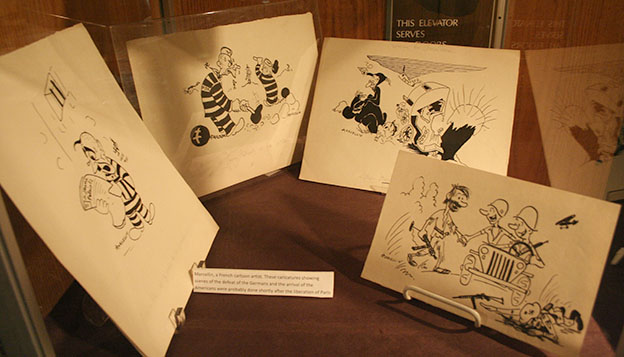Life, love and the horrors of war on display for Holocaust Education Week

Drawings depicting Parisian life during and after the Second World War is part of a Holocaust Education Week display at the William Ready Division of Archives and Research Collections.
They are the remnants of everyday life: letters, crafts, money orders, receipts, sketches.
They serve as testimony to life in the many concentration, labour and transit camps that existed in Europe during the Second World War.
Now these materials, on display during Holocaust Education Week at the William Ready Division of Archives and Research Collections, are helping a new generation learn about the past.
The collection includes correspondence, French resistance documents, propaganda pieces and artists’ responses to the war.
The correspondence is primarily from non-Jewish prisoners such as Stephanie Kunke, an Austrian socialist who died of typhus at Auschwitz.
There are also letters from prisoners who escaped from Auschwitz and survived, a letter with a handmade basket and dried flowers woven into the paper, a card from a prisoner at Bergen-Belsen and examples of censored letters received by family members and loved ones.
The exhibit also highlights documents from the Jewish Scouts of France, a French resistance organization.
The Scouts responded to the Nazi occupation of France by creating a network of underground branches that helped people evade roundups and deportation, participated in acts of sabotage, and in some cases even engaged in armed combat.
The collection’s propaganda pieces include leaflets dropped by the Allies on occupied France, Holland and Belgium as well as those dropped on Axis combatants. Most of the leaflets were created by the Psychological Warfare Division of the Supreme Headquarters of the Allied Expeditionary Forces.
The display’s art collection includes dark drawings by the Greek-born French artist and illustrator Tavy Notton as well as depictions of life in Paris after liberation by cartoonist Marcellin.
All of the items on display are drawn from the Library’s Holocaust and Underground Resistance collections. Many of the individual stories and translations of some of the materials appear on the Library’s Virtual Museum of the Holocaust and Resistance, funded by Madeleine and Monte Levy.
The Archives and Research Collections are located in the lower level of Mills Memorial Library.


